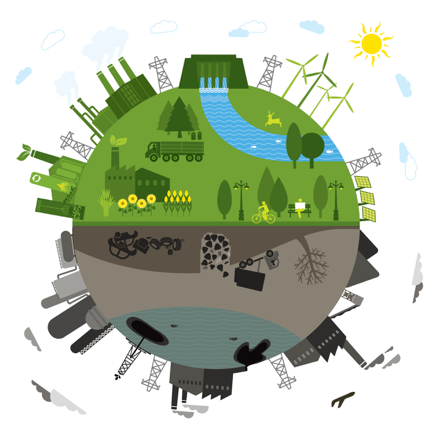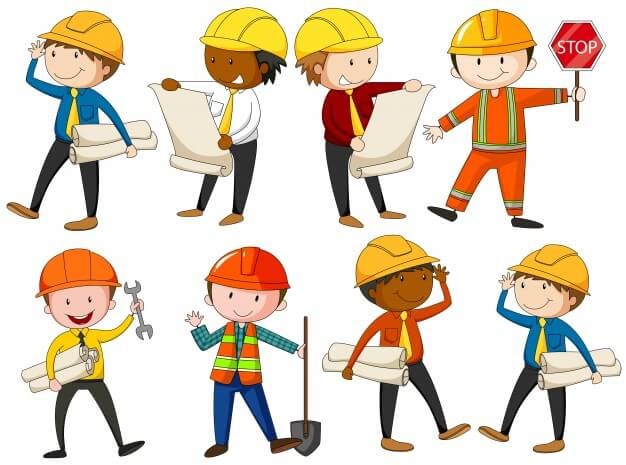The construction industry for decades has been known for its lethal combination of hazardous work culture and cutting-edge technology. But it is also an indicator of economic development and is one of the most booming industries across the world. This industry is now on the verge of a major technological overhaul, made possible by the Internet of Things.
Internet of Things in Construction Industry:
Source: esub
Green building. Enhanced security. Energy management. Safe construction! The scope of IoT and its application in the Global construction industry is seamlessly growing and the building ecosystem is witnessing above major reforms. From connected time-clocks, real-time monitoring, geo fencing, predictive analysis, digital forms and Wi-Fi management it is producing smart and connected job sites for the future. Let’s find out how is IoT radically transforming building design and construction.
How IoT enabled construction company works?
Source: jobs4welding
Let’s examine the working schedule of a construction supervisor after his company upgrades to IoT.
It’s early Monday morning and a construction supervisor starts the day by getting in the company provided vehicle, which has automatic log-in and connected Time-clocks. This allows the company to track the vehicle along with the supervisor and evaluate the vehicle performance metrics, such as his stoppage timing and mileage for better fuel management. Every vehicle, asset and authorized member of the company is wirelessly connected. As the supervisor reaches office, Geo fencing logs his vehicle arrival on site and informs his crew and other members so they can start reporting him.
The supervisor has permanent access to the location of his employees and heavy equipment. Real time monitoring ensures workers safety and prevents asset loss. Tasks are automated using digital technology and is connected to the back office of the company. Workforce for deliveries, invoicing, inspection and quality control are all optimized to keep the schedule on budget and on time. This streamlines daily record-keeping and admin work.
Predictive analysis warns of issues before they become a bigger problem. It also helps in minimizing downtime by tracking operating hours and analyzing equipment usage, which in turn informs supervisor about maintenance requirement. Now, the supervisor uses managed Wifi to keep workers connected to each other while on-site, to send and receive large data files like large engineering designs, securely and without interference. As the shift ends, a temporary portable security system around the site area will inform any movement around the area to the supervisor.
How Can Technology Benefit Workers?
Source:freepik
Enhanced Security: We are aware about the cases of injuries and accidents at construction sites. By integrating RFID bridge and wearable ERP technologies into the building system we can manage and enhance security at construction site. Now, workers can avoid any contact with dangerous equipment’s as they can be controlled technically from a remote location.
Remote operation with Machine-to-Machine monitoring (M2M): Wearable devices to monitor health and alertness of workers, automatic cataloging construction hours, detecting technical glitches and prevention of any fire or industrial mishap. With IoT technology, we can install sensors in the machines and automatically transmit information regarding the status of the machinery.
How construction industry can promote environment sustainability?
Energy Management: With IoT, we can proficiently send back data about energy consumption and then adjust lighting to save energy, just like Smart Homes. Also, IoT embedded machines, which consume fuel can send back info during their idle time.
Green buildings: To transform the process of designing, constructing and operating buildings and to avoid solid waste generated from the construction industry, the concept of IoT based green building is here. For instance, by embedding EDC (Embedded Data Collectors) into concrete, contractors can simply measure its mechanical properties. Or data generated by sensor can control electricity consumption or sense vacant room.
How Has IoT Reformed Working Procedure of Construction Industry?
Building information Building (BIM): This technology develops 3D models of buildings for better understanding of a building’s structure and systems. Also, BIM allows us to place sensors in constructed buildings, which helps us to gather information about materials on real time basis and let us learn and create better structural alternatives. For instance, the effect of changing weather on materials with passage of time.
Source: bsria
Augmented reality (AR): AR will allow construction professionals to watch operating instructions and other information covered on real time basis. From integrating AR straight into equipment screens and vehicle windshields to receiving instructions or driving/navigational information into their equipment, all are part of AR.
Easy Replenishment of Supply: Here, the units of supply are marked with RFID tags, where an active arrangement in the company counts them. Whenever the count drops below a given level or there is any miscalculation, the system activates a request from a central system to order more or rectify the mistake respectively.
Construction Tools and Equipment Tracking: With IoT, locating the equipment becomes viable along with automatic execution of instructions via virtual map and terrain modification. This reduces the time lost in the procedure and promotes improved working presentation. The construction tools can also be modified with IoT for better performance.
Maintenance and Processing: Sensors installed in machineries can automate the process of maintenance of equipment, can self-detect any error and lower the operating cost.
The Internet of Things is radically defining the construction industry and the process of delivering building project.
With the advent of IoT, the world has managed to adapt this technology in different industries and construction industry is no different from others. Let us know if you like our article through the comments section below.






 Subscribe Now & Never Miss The Latest Tech Updates!
Subscribe Now & Never Miss The Latest Tech Updates!